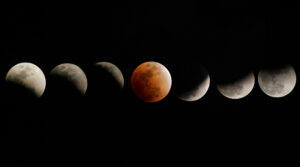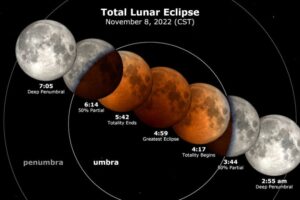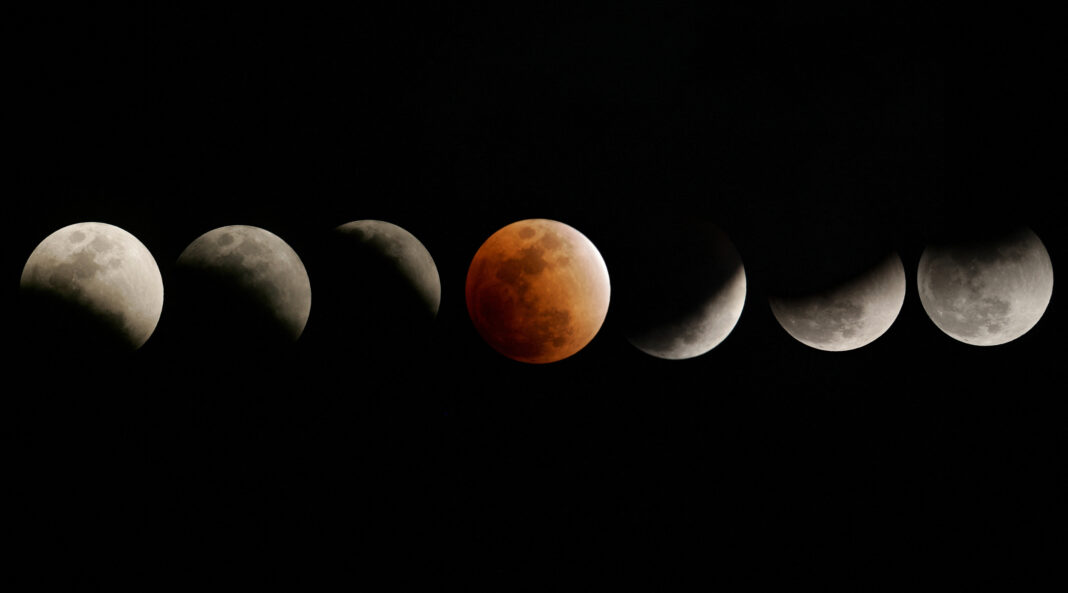According to the Pakistan Meteorological Department, the second complete lunar eclipse will be seen on November 8, 2022, in several locations around the world.
The majority of South America, Asia, Australia, North America, some of northern and eastern Europe, and sections of Europe will all see the celestial display. The Met Office announced on Saturday that it will also be partially visible in Pakistan starting at moonrise. Major cities across the nation, including Islamabad, Lahore, Karachi, Peshawar, Quetta, Gilgit, Muzaffarabad, and others, will see the eclipse. A total lunar eclipse, partial lunar eclipse, and penumbral lunar eclipse are the three different forms of lunar eclipses.
Tuesday will see the moon glow red during an astronomical event that won’t be repeated until 2025. All of North America will be able to see a total lunar eclipse that is caused by the sun, Earth, and moon coming into alignment. This will be the second lunar eclipse this year that can be seen from the continent; the first one occurred on May 25–26. The approaching eclipse can also be observed from Hawaii, Australia, New Zealand, Japan, and eastern Asia, in addition to being visible across North America. The next time two total lunar eclipses will be visible from North America in the same year will not be until 2029.

In 2015, two complete lunar eclipses were observed from North America for the first time in a single year. The moon will progressively vanish as it moves into Earth’s shadow, building up to the total phase of the eclipse. At this point, the planet prevents the moon from receiving any direct sunlight. Despite spending about an hour and a half in Earth’s inner, dark shadow, the moon will not vanish from view. It will instead change to a red or orange hue. The hue change is what gave rise to the well-known moniker “Blood Moon.” Blood Moons are so named because the eclipsed moon occasionally seems dark red, yet other times it appears rusty orange.

During a total lunar eclipse, the Earth’s atmosphere, not the moon, determines the precise hue that observers see. According to NASA, the moon becomes red during a lunar eclipse because Earth’s atmosphere filters the only sunlight that reaches the moon. The moon will appear redder if there is more dust or cloud cover in the Earth’s atmosphere during the eclipse.


